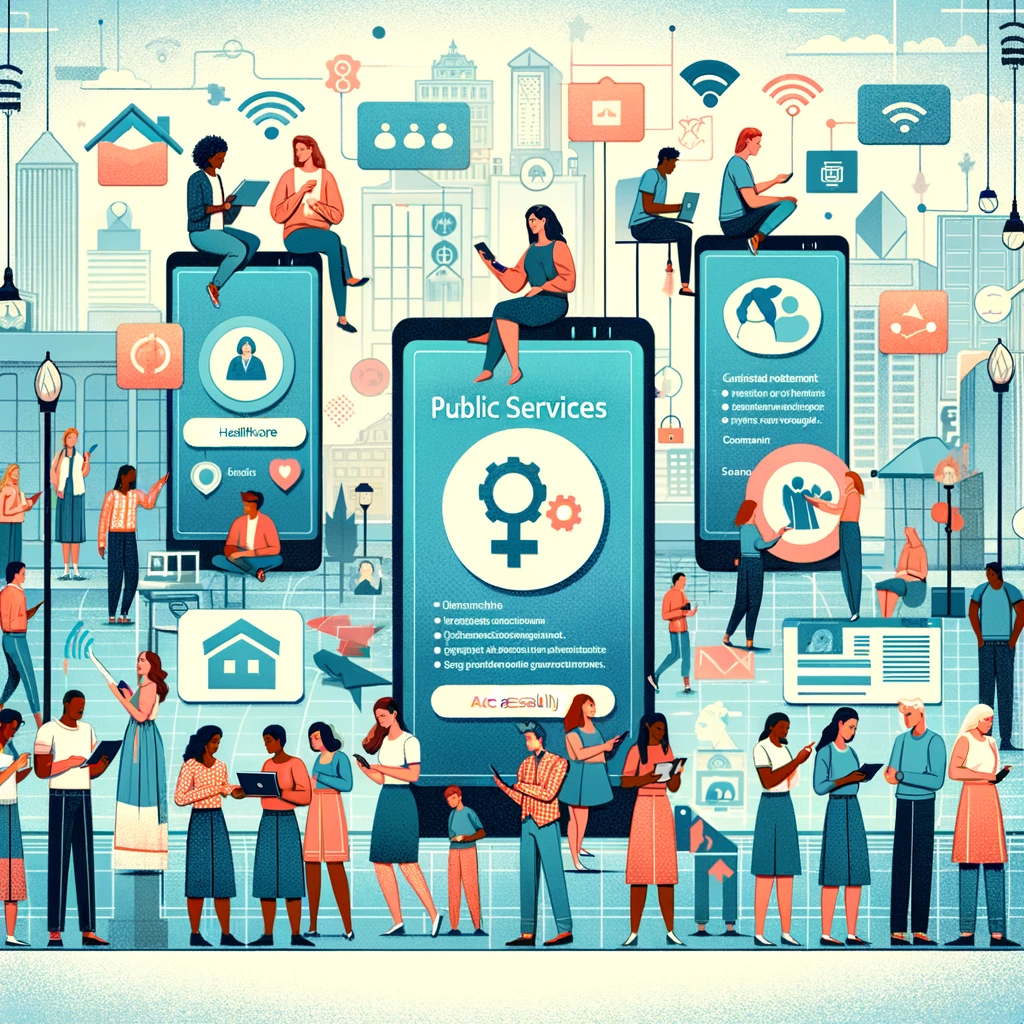Embracing Diversity for Inclusive Digital Services

Digital public services are essential for modern societies, but they haven’t always catered to everyone’s needs. It is time to rethink these services through a more inclusive and diverse perspective. To do so, GovStack started an expert roundtable about gender inclusive service design and has first insights to share. In this blog post, we will explore why integrating gender-responsive and intersectional approaches into digital service design is crucial and how it can enhance the effectiveness, resilience, and inclusivity of public services.
Why Gender-Responsive Design Matters
Digital services often carry biases inherited from existing legacy systems, excluding diverse perspectives. Depending on the societal group a person belongs to, they have different levels of access to, and are impacted in different ways by digital technologies and services. One example where digital service design has gone wrong, is when a service is only accessible via smartphone or computer, in a context where women’s use of digital technology is supervised or structurally restricted. Likewise, medical services based on predominantly male data may be useless or even harmful for women.
Incorporating gender-responsive design means understanding that gender is a cultural construct and acknowledging its influence on how services are adopted and understood. Historically, public services have been shaped by a predominantly masculine perspective, leaving out crucial considerations for women and marginalized communities. The creation of eLearnings is an example of a digital offering that can benefit women specifically. Because of its independence of time and place, women who are occupied with early childcare or care of the elderly can access this type of education more flexibly.
Inclusive digital services require a shift in mindset, processes and paradigms
Creating truly inclusive digital public services requires a shift in approach. It involves engaging communities in co-creation, ensuring gender balance in decision-making processes, and redefining paradigms we utilize to design digital public services. Especially the element of co-creation should not be confused with consultation. Instead of just listening to the affected communities, co-creation entails taking action based on the knowledge and perspectives that have been shared. To create structures and conditions that promote inclusivity, different factors are at play. By transforming the enabling environment, amplifying marginalized voices, and enhancing access to opportunities, services can be more responsive to diverse needs.
Driving Change for Inclusive Environments
To achieve gender-responsiveness, clarity about the aim of the service, diverse team compositions, human-centric design, and inclusive decision-making cultures are key.
Effective and thoughtful data collection, gender-responsive procurement, and continuous monitoring and evaluation further fuel this transformation. Implementing practices such as a life cycle approach that considers the individual at all stages of life, appropriate technology, and community engagement can drive tangible change. These approaches enable practitioners to gain a better understanding of how women are affected by a specific digital service and guide the design toward more accessibility and inclusion of women.
Empowering Diversity: Uniting for Inclusive Progress
Innovation in digital public services demands a shift in mindset, inviting diverse perspectives and ensuring inclusivity at every stage. Integrating gender-responsive and intersectional approaches isn’t just a necessity; it’s a gateway to more effective, resilient, and equitable services that cater to the needs of all individuals.
By considering some of these practices, we move closer to a future where digital services are designed with empathy and understanding, embracing the richness of diversity for the betterment of society as a whole.
It is the responsibility of everyone working at the intersection of digitalization and public service creation to consider gender and intersectionality as relevant factors within their work. That way we can reshape digital public services to be more inclusive, effective, and responsive to everyone’s needs.
This condensed blog post highlights parts of the GovStack whitepaper on gender-responsive digital service design. It is a living document and we are looking for further contributions and feedback. Access the full paper here and either comment directly or send your feedback to info@govstack.global